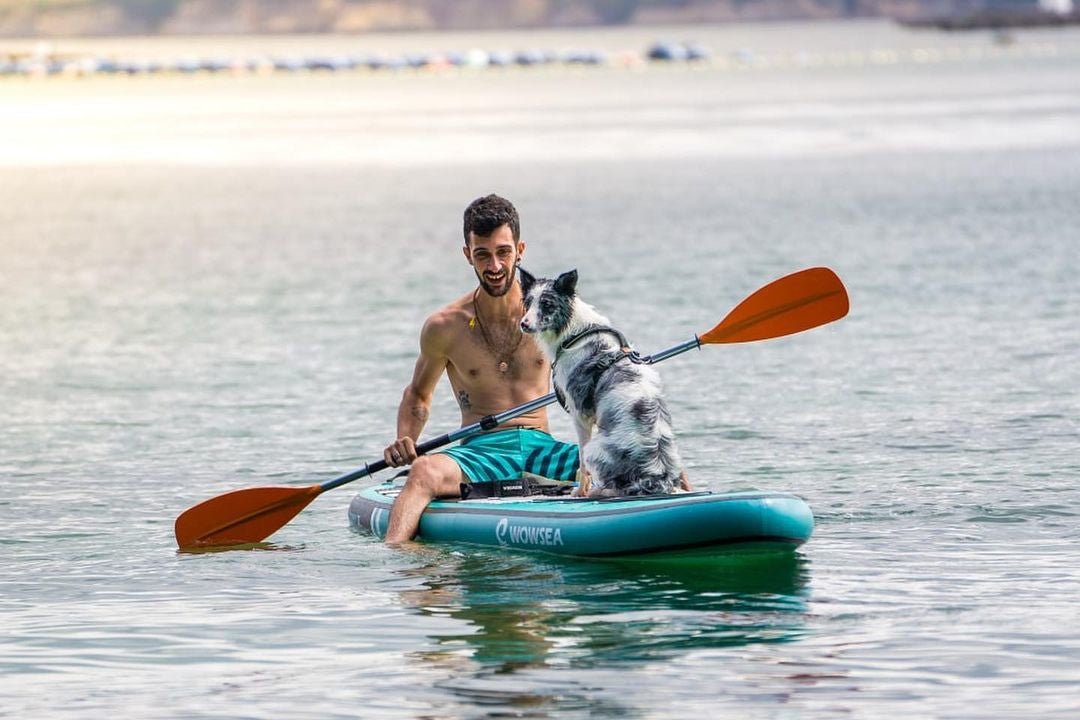
The Ultimate Beginner's Guide to Dog Paddle Boarding
What could be better than coaching your canine to accompany you to your paddle board travels if you enjoy SUP and your dog?
You and your canine may additionally paddle board collectively to get some exercise and spend quality time in nature. These suggestions can make teaching your pup to ride on your stand up paddle board easy, secure, and enjoyable for each of you in case you're thinking about bringing your dog out on the water.
What You Will Need to Paddle Board With Your Dog
1. An Optimal Board
Wider and longer boards are the best paddle boards for dogs since they're more stable. It is really helpful to take a look at a paddle board that is at least 10 feet long and 32 inches broad when choosing one for you and your canine. When you are taking your canine along for the adventure, the most stable boards are those that are longer than 10 feet.
Make sure to consider both your weight and the weight of your dog when deciding on a board. The board will be more unsteady the bigger the dog is with it. With the proper board, paddle boarding is possible regardless of how massive or how many puppies are. Deciding on a board with a complete deck pad for traction, such may be discovered here, is one manner to make certain that your board is pup-ready.

2. Good Grip
Many paddle boards could not offer your dog's paws tons of traction. Buy a paddle board with a dog-pleasant grip to ensure that your partner doesn't slide off when you hit a wave. Boards with a whole deck pad or at least an extended deck pad are the best SUPs for puppies. Extended deck cushions are frequently included with inflatable boards. There are opportunities if your board's deck pad isn't always big enough. Used yoga mats make fantastic substitutes.
And do not forget to have a life jacket for you and your pooch. Make certain your dog gets used to having it on at home first before you hit the water!
Getting Your Dog Used To The Sport
Your dog may find paddle boarding to be overwhelming at first. When something is unfamiliar to him, even basic events like donning a life jacket or standing on the board might make him more fearful. Use these tips to familiarize your dog with the sport before hitting the water to be able to make the transition as smooth as possible.

1. Basic Commands
Ensure your dog has mastered essential obedience instructions like "sit" and "stay" before you and him mission out onto the water.
2. Master The Board Yourself
Wait until you feel comfortable using a SUP by yourself before using one with your dog. You must feel at ease standing up, twisting, and paddling. Verify that you can fall and remount from the water. If you are uncomfortable, your dog will reflect that, and bringing a dog along while learning to stand up paddle board will only make things more challenging.
3. Get Your Dog Accustomed To The Board
Introduce your dog to the board on solid ground before stepping into the water. Place the board in a room in your home in which your dog feels at ease. Permit him to study it, scent it, and investigate it at his own pace. If he takes a little while to get used to it, it won't be an issue if he doesn't jump on straight away.
4. Use Treats
Place a treat on the board after it's been inside the home for a while to inspire your dog to walk on it. Give him another goodie after telling him to sit. He should feel somewhat at ease with the board after repeating this. Do not push him and take your time. The dog should like the board. He shouldn't be under any stress or fear.
5. Reward Good Behavior
Educate your dog to jump off the board only when advised, and while he complies, supply him with a treat or some praise. Puppies often emerge as agitated and jump off the board as you approach the beach. You can lose your stability as a result of this and fall into the water, which might be riskier near the coast.

How To Paddle Board With Your Pup
While you are out on the board, make sure your canine stays on land. Show him it's enjoyable and not terrifying through waving, laughing, and smiling. Permit your canine to join you at the board while preserving its stillness within the water. Let him jump off if he wishes whilst you navigate the board through the shallow water.
Get on the board together with your dog when you're each prepared to do this. For improved balance, start your paddling strokes while kneeling. With your pooch beside you or at your feet, stand up. Get comfortable paddling without bumping against him. Small puppies are permitted to perch on the board's nose. Your dog can ride in front of you on the board if you've mastered avoiding touching him with the paddle. Big dogs can sit down at the rear third of the board for improved weight distribution and stability.
The first time, keep it short. Reward and commend your dog as you come back to land. The first time may not pass perfectly, however that's all part of the learning process.
Your dog may jump off at any time, so be prepared. When a big dog jumps off the board, it will move significantly, and you can fall in with them. Only stand on the board if the water is deep enough and you are clear of any potential threats, such as boats or other people. Help your dog get back on the board if he leaps or falls off. By doing this, he may additionally keep away from scratching the board's finish while trying to get back on. The handles on life jackets are often there for you to hold onto.
Bring water for each of you. Your dog may want to drink the salt water if you are paddling into the ocean. Ingesting an excessive amount of salt water would possibly cause them to become dehydrated (and cause other health troubles).

Stay patient, puppies were not all bred to be riders. Don't force it to click if it is not doing so. Both of you won't enjoy the experience if you become frustrated.
Recent Articles
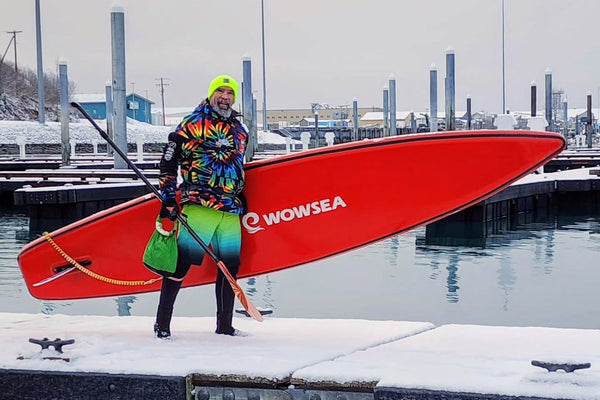
Tips for Keeping and Using Inflatable Paddle Boards in Winter
Let's talk about how to use and maintain inflatable stand-up paddleboards (SUPs) in winter. We’ll cover equipment checks, how to dress properly, choosing the right safety gear, and paddling techniques. With the right preparation and exploration, you can create unforgettable water adventure memories this winter!
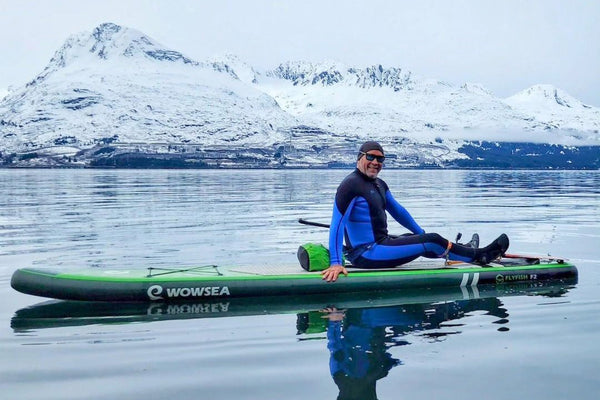
Cold Weather, Warm Spirits: Inflatable Paddle Boards' Winter Wonderland
By navigating icy waters on your inflatable board with a focus on safety, you can discover the profound silence and stark beauty of the winter waterways, all while keeping fitness levels high and spirits invigorated.
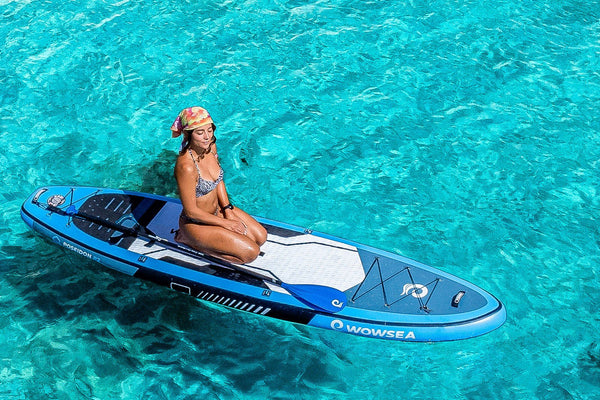
How to Incorporate Meditation into Your SUP boarding Routine
SUP boarding is not merely a recreational pursuit but a holistic journey—where the water becomes a canvas for meditation, and each stroke becomes a brushstroke in the masterpiece of mindful living.
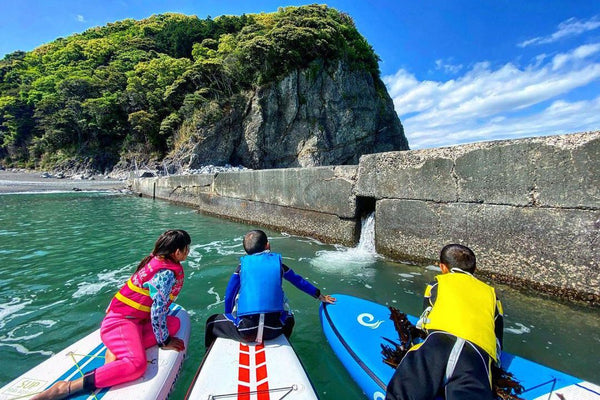
A Comprehensive Guide to Family Stand-Up Paddleboarding Adventures
From choosing the perfect board and accessories, overcoming challenges, and building confidence in young paddlers to capturing memories through photography and exploring family-friendly paddleboarding destinations, the WOWSEA SUP experience is rich with opportunities for bonding, learning, and creating cherished memories.
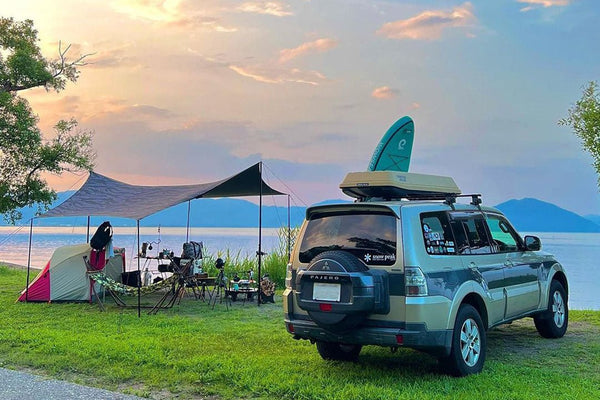
How to have an overnight Multi-Day SUP Trips and Camping (2)
The Complete Guide to Paddleboard Travel and Camping: Pack your gear, set up camp, and get ready to create lifelong memories on the water with WOWSEA SUP boards.
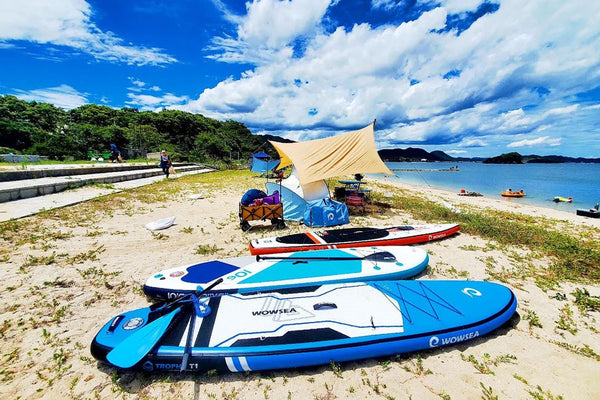
How to have an overnight Multi-Day SUP Trips and Camping (1)
The allure of multi-day trips and camping with SUP boards lies in the freedom to explore remote and untouched locations. This opens up a world of possibilities for adventurers who crave solitude, tranquility, and an intimate connection with nature.
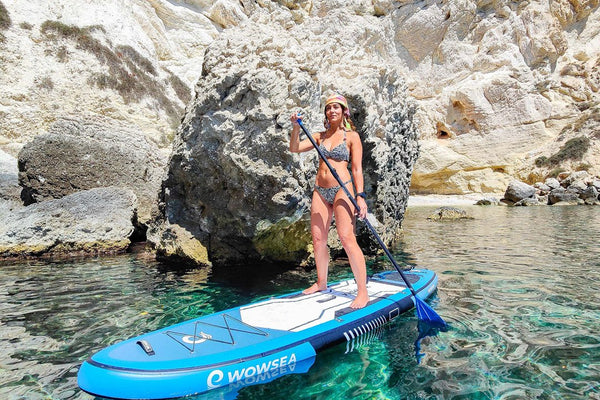
Exploring the Beauty of Nature with WOWSEA Inflatable Paddle Board: A Guide for Tourists
With the WOWSEA Inflatable Paddle Board, tourists can embark on unforgettable adventures and experience the beauty of nature in a whole new way.
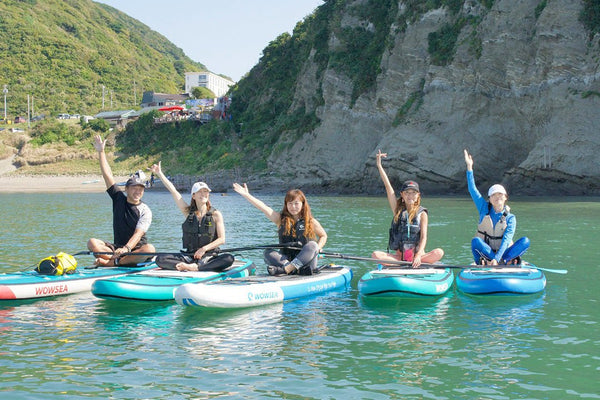
How to Paddleboard with a Group - Games and Activities
Group paddleboarding games and activities are a fantastic way to bond with others, have fun, and make the most of your time on the water. They provide opportunities for friendly competition, teamwork, and exploration, enhancing the overall experience of your paddleboarding adventure.

Share